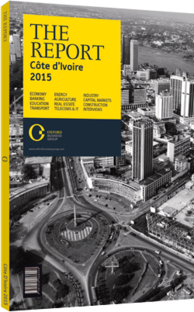Kadi Fadika-Coulibaly, Managing Director, Hudson & Cie, on challenges and opportunities in the secondary bond market: Viewpoint

The bond market is made up of 76% treasury bonds, issued by the eight West African Economic and Monetary Union (Union Economique et Monétaire Ouest Africaine, UEMOA) states; 16% from international and regional development institutions; and 8% corporate bonds. From 1998 to 2009 the corporate segment was not very active owing to regulation requiring corporate issuers to back bond issuances with a first demand guarantee offered by regional guarantors. As all issuances complied, rates were similar for any issuer regardless of their creditworthiness. A rating system was introduced in 2009 and two rating agencies now operate in the UEMOA. The new regulation authorised corporations and states to issue bonds solely on their creditworthiness, leading to more corporate issuances. It likewise creates space for investors to better appreciate the risks associated with different issuers.
The main investors in the region are pension funds, insurance companies, mutual funds and banks. International investors do not participate and, as regional ones are buy-and-hold investors, they do not make for a flourishing secondary market. These regional investors collect regional savings that cannot be invested externally and are over-liquid, especially on five-year and lower maturity bonds. They prefer not to sell any position for fear of incurring a major reinvestment risk given limited investment opportunities in the UEMOA.
With respect to lack of participation from international investors, my first explanation is the relatively small volumes offered (€750m raised in 2013 for a cumulative market capitalisation of about €1.5bn) and limited liquidity (measured by rotation ratios of 1.73% in 2013 and 4% in 2014). They do not justify the time and effort dedicated to the study of the market and its opportunities for making an investment decision. The larger part of state borrowing is done in the money market segment (€1.5bn raised in 2013), which is managed by the central bank. However, the bank has not yet put in place a system for investors to directly access information about prices and volumes exchanged in the segment.
The second explanation is that the yield curve is somewhat flat. Fairly low and stable inflation (thanks to the peg to the euro), combined with the high liquidity of regional investors and investor uncertainty on future economic perspectives, has induced lower shortand long-term rates. In addition, the investment committees of regional institutional investors are not always staffed with traders or financial market specialists to arbitrate and manage investment portfolios according to market movements. Bonds issued in the regional market have an embedded liquidity mechanism as they amortise throughout their life, lowering risk and duration, making most issuances short or medium term.
Luckily, reforms are on the way to create a better structure for the bonds and bills market, with both market makers and primary dealers set to be put in place by the end of 2014. This should allow for easier mark-tomarket and help investors receive daily price indications. Liquidity will also be bolstered as market makers offer two-sided pricing and volumes. In fact, market makers will have to individually ensure 2% of the total secondary market and should therefore act as counterparties to other investors seeking liquidity.
The central bank has also been working on a reform transferring custody of treasury bonds and bills to the region’s central depositary and clearing house in order to be dematerialised for easier trading and recording. This system lets international investors use their global custodians, as is the case for the equity market.
With most countries in the region shifting focus from short-term spending to long-term investment, demand for longer maturities is growing – as evidenced by longer maturity bonds with wider amortisation grace periods from the region’s states and corporations. However, we are still waiting for the region’s first zero coupon bonds, which will help to create a more active secondary market by fuelling both arbitrage and profits.
Lastly, it is important to note that the regional currency’s peg to the euro frees investments in the CFA from the exchange risk seen in other African countries.
You have reached the limit of premium articles you can view for free.
Choose from the options below to purchase print or digital editions of our Reports. You can also purchase a website subscription giving you unlimited access to all of our Reports online for 12 months.
If you have already purchased this Report or have a website subscription, please login to continue.

